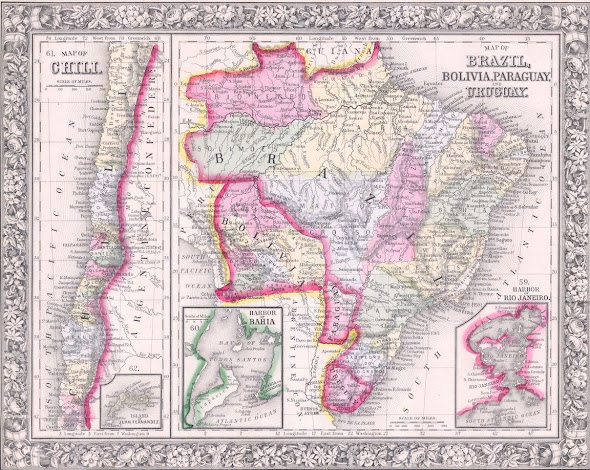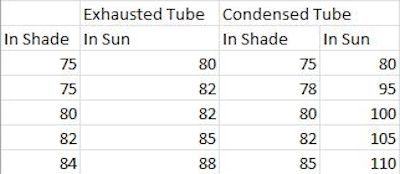The Death Storm--1855 Norfolk, Virginia
It was summer when the dying started. The source outright lied, insisting there was no problem and left quarantine. Some authorities failed to report the disease or did not recognize the problem until it was too late.
It was contagious. It
was not contagious.
Many people hardly knew they had been infected while fifteen percent of the infected died horrible deaths, insane with fever, spewing black vomit and gasping for breath. The immigrant poor, stuffed twelve or more to a room, suffered disproportionately.
Dozens of doctors and
nurses died while tending the sick. Cemeteries and grave diggers would have
been overwhelmed if coffins had not been in short supply.
Physicians tried all
manner of treatments. Nothing worked. Masks and quarantine proved to be no defense
at all. Businesses closed so the remaining healthy population ran short of
supplies. Banks closed, so the living had no money. News outlets ceased operating,
so rumor ran rampant. Dogs and cats roamed the streets, starving because their
masters were dead. Looting the homes of those that had fled or died was
widespread. Nearly all the police were dead. An orphanage was established which
quickly filled up with several hundred children.
Then, it abated. By
the end of October 1855, “The Death Storm,” as the residents of Norfolk and
Portsmouth, Virginia called it, disappeared
Yellow fever had
struck and left. A cause and cure were nearly a half century in the future.
The ship Ben
Franklin anchored off Portsmouth Virginia the morning of June 7, 1855.
His ship needing repairs, Captain Bynum hoped to have those completed at the
Gosport Navy Yard neighboring Portsmouth. Following normal procedures, the
harbor health inspector came out to inspect the ship’s papers and determine the
health of the crew before allowing the Ben Franklin to dock. Captain
Bynum admitted the ship had come up from St. Thomas in the West Indies but that
there was no disease in the ship-despite the fact two crewmen had died on the
trip. Nonetheless, yellow fever was known to be widespread in St. Thomas, so
the Ben Franklin was sent to anchor offshore for a quarantine
period of two weeks. The harbor health inspector may have noticed a stench
rising from the cargo holds, but that was hardly considered a health threat.
Probably through a bureaucratic mistake, the Ben Franklin was
released from quarantine early June 19 and allowed to proceed into Gosport to
begin repairs on June 21.
There, a ship’s
carpenter was called aboard to re step a mast, that is to reconnect and brace
the base of a wood mast to the ship’s keel. Once aboard, the carpenter declared
the bilge water too deep and the stench so powerful it was impossible to re
step the mast until the bilge water had been pumped out, the cargo hatches
opened and the smell allowed to dissipate. No ship’s bilge water smells like
roses, but after the Ben Franklin began pumping its bilge into
the swamp area bordering the wharves, houses in the area closed their windows
and doors to keep out the smell.
In St Thomas, infected
mosquitos had laid their eggs in the ship’s bilge water. The swamps surrounding
Portsmouth and Norfolk were ideal breeding areas in summer.
On July 5, an Irish
laborer repairing the Ben Franklin fell ill. He died two days
later. A local physician, Dr. Upshur, correctly declared the man had died of
yellow fever.
For a week or so
afterwards, the public did not believe him. “Upshur’s Illness,” as some
scornfully called it, could not be yellow fever. The port had a reputation for
being a healthy area. Yellow fever was familiar to ports and doctors further
south. New Orleans had suffered a terrible epidemic two years before. There had
even been an epidemic in Norfolk 32 years before, and as many as ten epidemics
had plagued New York City since its founding. Overall, though, the disease
remained endemic to ports further south and particularly to the Caribbean.
It was believed at the
time “unhealthy miasmas” arose from water during summer in low lying areas
causing widespread disease. Charlestonians, for instance, regularly spent
summers further inland or even went to upstate New York for the summer months.
Soon, more of the dock
workers, nearly all recent Irish immigrants living in cramped tenements along
the swamp banks, fell ill. Local authorities displaced the Irish and burned
down the entire slum area. It had no effect on the disease’s progress and left
the Irish homeless.
By late July, yellow
fever had crossed the river to Norfolk. As the disease spread rapidly in early
August, the citizenry of both cities became alarmed. Many of the wealthier
started to leave for second homes on higher ground. As panic grew, store owners
closed, gathered their families, and left. Surrounding towns imposed
quarantines or outright prohibitions on the mass of refugees pressing inland or
looking for passage across the Chesapeake to Baltimore.
The disease was caused
by a virus infecting the Aedes aegypti mosquito, a native of
Africa. The mosquito’s bite transferred the virus to people where it gestated
from two to four days. It was a cunning disease. The victim became very sick,
with headaches, pains, fever and a number of other complaints, generally
recovering after about six days. For about fifteen percent of victims, the
recovery lasted only twelve to twenty-four hours, after which the disease
returned with deadly ferocity. The victim’s skin turned an orange or bronze color
after which their fever rose extremely high; delirium followed along with
spewing copious quantities of black vomit. Doctors estimated half of the
patients who reached this state died.
The frightening aspect
of the malady was its randomness. It seemed to be contagious because the
mosquitos would bite numbers of people congregated together. Otherwise, doctors
noted victims who had been sent to areas with low infection did not pass it on
to the doctors and nurses there.
As the August heat
bore down, the situation became desperate. Banks closed and transferred all
funds to their headquarters in Richmond. By now, the yellow fever epidemic was
front page news throughout Virginia and across the country. Towns and civic
organizations formed “Howard Committees” to collect funds and goods to send to
the stricken area. Named for a New York doctor decades before, a “Howard
Committee” was the term for any ad hoc group set up for some charitable
purpose. By now, though, there was difficulty getting money and goods to Norfolk
and Portsmouth. The executive of a steamboat company in Baltimore volunteered
to take doctors and nurses into Portsmouth free of charge. The Seaboard
Railroad committed to bringing medical and food supplies into the area free of
charge.
It was a religious
age, and ministers of all sects volunteered to administer last rites and
comfort the ill. Doctors and nurses volunteered from as far away as upstate New
York and as close as Richmond to come at their own expense to care for the sick
and dying.
An area for a mass
grave was established and a tent hospital set up in the horse racetrack outside
of Norfolk. Many volunteers would be buried there along with their patients.
By mid-August the
local newspapers ceased publishing—their editors and employees either dead or
fled.
Ft Monroe sat across
the water from the harbor. It was mostly a collection of crumbling buildings,
but to many minds in the epidemic area, it might well be a much healthier
place. A committee of men from Portsmouth and Norfolk went to Washington, DC to
ask President Franklin Pierce for help.
President Pierce
received them courteously and listened to them intently. He promised to have an
answer the next day. He met with his cabinet later that afternoon.
The following morning,
Pierce told the committee the cabinet members and he had put together a
personal contribution of $365 for the relief efforts but the fort could not be
used, as much as it pained him to say. He had authority to move the eleven
hundred men out of the fort and transfer them elsewhere, he explained, but he
had no authority over the soldiers’ wives and children to compel them to move
nor the budget to pay for moving them. Moreover, it would take so long to move
even the soldiers, it would be of little help to the stricken area. Clearly
disturbed by the negative answer he delivered; Pierce offered to contribute
much more money from his own purse as needed.
The only direct help
the Federal government delivered was the Secretary of the Navy authorized the
Navy base commander in Gosport to immediately give priority to building coffins
gratis for the cities and to open the Naval Hospital to civilian patients.
As bad as matters
were—they got worse.
Norfolk’s mayor died.
Portsmouth was without government as there were not enough members of the city
council to form a quorum. All the policemen were dead in Norfolk and the
remaining council there appointed one volunteer. Surrounding areas tightened
their quarantines. An ad hoc orphanage formed in Norfolk was now far too
overcrowded. A committee of couples in Richmond offered to take in one or two
each the children while the city would care for the rest.
Cures for yellow fever
were diverse and, by modern standards, appalling or whimsical. A balloonist
declared taking large cannons into the air above the cities and firing a number
of rounds was sure to drive out the illness. One doctor averred he had never
lost a patient rubbed with whiskey and red pepper over their whole body.
Another said the most important thing was to “make sure the patient is not
frightened.”
Several doctors
compared weather reports against mortality rates in New Orleans in 1853 to the
mortality rates and storms in Norfolk. They could see a clear correlation in
the rise of deaths after storms but attributed it to “lightening polluting the
healthy air.” It was noted yellow fever always disappeared after the first or
second frost when thunderstorms generally ceased.
Others argued it was
simply because colder weather suppressed “malicious miasmas” from rising.
By the end of October,
the epidemic was over. Estimates of 2,700 to more than 4,000 people had died
out of a population of 14,000 to 20,000. Nearly everybody had suffered the
disease to some extent and most families had lost one or more members.
A grateful Norfolk acknowledges the Howard Association of Richmond's Efforts and admitting as many as two thirds of the population required some of the money.
People commented that
curious insects with four narrow, pointed wings seen so often during the summer
it was nicknamed the “plague fly,” had disappeared.
The following year,
Norfolk commissioned a forty foot tall marble monument to the heroes of the
epidemic and honoring the dead.










Comments
Post a Comment